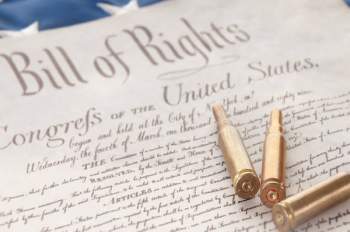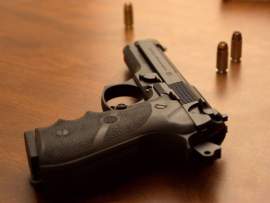
Ammunition Background Overview

The term ammunition, at least in speaking terms, generally is thought to refer to bullets. Bullets are the projectiles that fire out of guns, and are what can be considered as the most dangerous part of a weapon. However, the term and the meanings behind the word ammunition are more complex than can be concluded without proper examination. Ammunition, also known as ammo, does in fact refer to the projectiles that are fired from firearms. However, the term has grown and expanded to include various other types of projectiles, some that are much more advanced than bullets; anything that can be used in combat can also be included in the word when used in a collective sense. The word ammunition derives from the French term munition, which referred to all items used in war. As time progress, the term became specifically tied to gun power and artillery applications. In order to understand how ammunition encompasses so many aspects of firearms and artillery, it is imperative to understand ammunition at one its most basic modern forms, the bullet.
The bullet is a projectile fired out, in this specific purpose, out a gun or
firearm. The bullet itself does contain any explosive elements, such as
gun powder, but technically speaking, it is part of a cartridge that actually
hits an intended target. What most people will commonly refer to as a
bullet is, technical terms, the cartridge; the bullet is the projectile
itself. A cartridge consists of several parts. The bullet, as
explained, is the projective, and is the top of a cartridge. The
following section is called the case, which holds all of the cartridges
components in place. Inside the casing, the propellant, which powers the
bullet, is contained within. The propellant is usually gun powder, or in
more modern times, cordite. The rim is part of the casing which is used
for the actual loading of the cartridge itself. Lastly, the primer is the
component that ignites the propellant, is powered by the gun's firing
pin. For the purpose of small or conventional firearms, such as shotguns,
rifles, and handguns, a collection of cartridges may be referred as ammunition,
and often stored in ammunition boxes. Each particular type of firearm has
a specific size cartridge that is needed in order for the weapon to function
properly. The size of the cartridge commonly referred to as a caliber
size. Caliber size actually refers to the diameter of the cartridge, but
length is also important when specifying the proper and necessary ammunition
for a particular firearm. Cartridges are usually made out of brass, but
may also be made of steel, because of its affordability. The cartridge is
today's most basic form of ammunition, but as history shows, ammunition
referred to projectiles used in cannons and matchlock and flintlock firearms.
Ammunition is one the most important components when referring to
firearms. Though simple at first glance, the actual components of
ammunition are complex and deserve in depth view to understand the scientific
aspects and practical applications as used today to furnish those individuals
that need it as a form of life, such as law officers and military
personnel. With the invention of the cartridge, the word ammunition has
begun expand its meaning, but essentially, it still means the same thing.


















